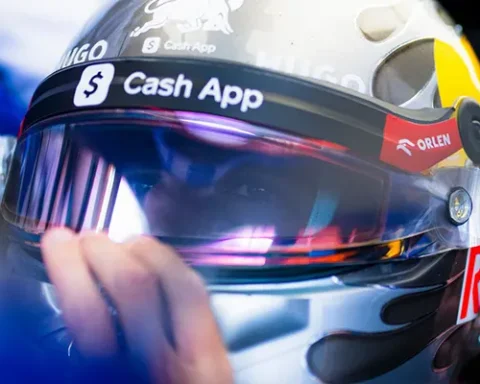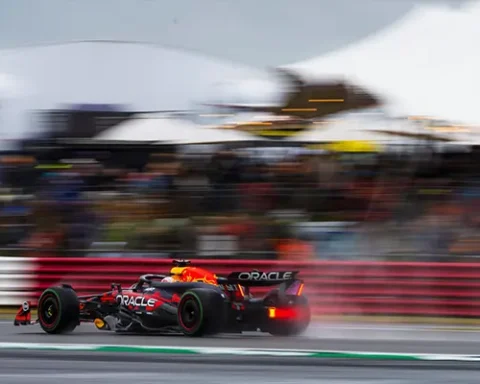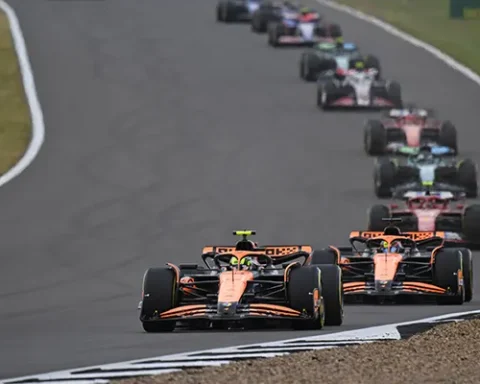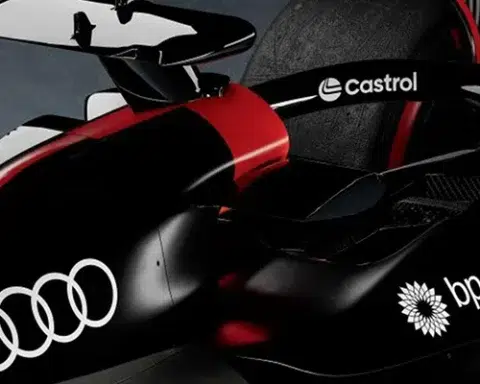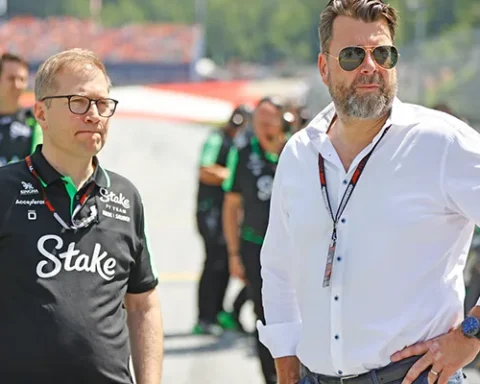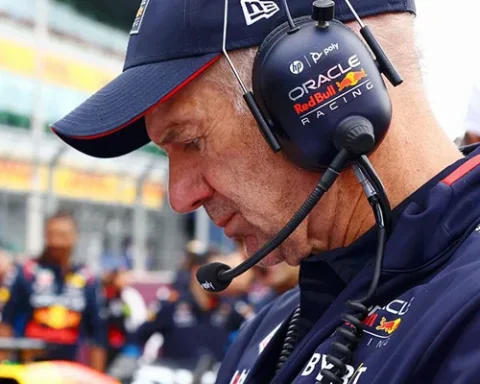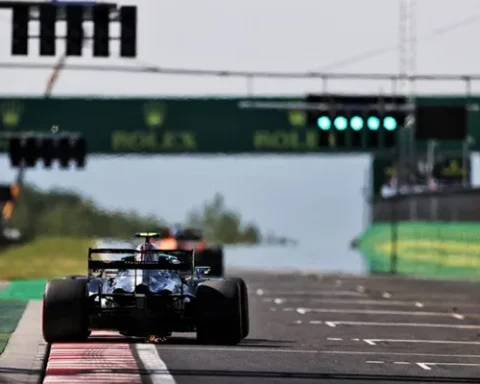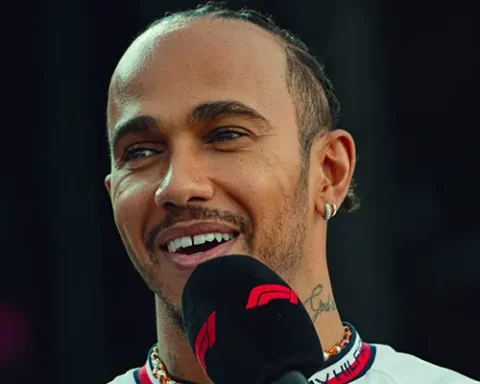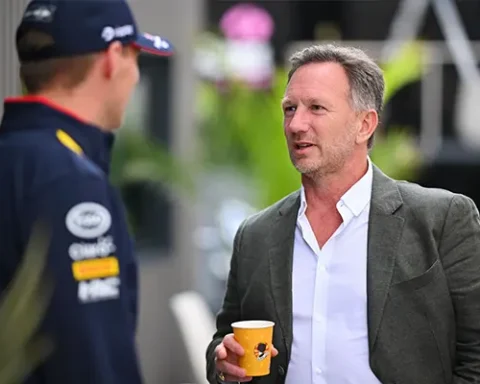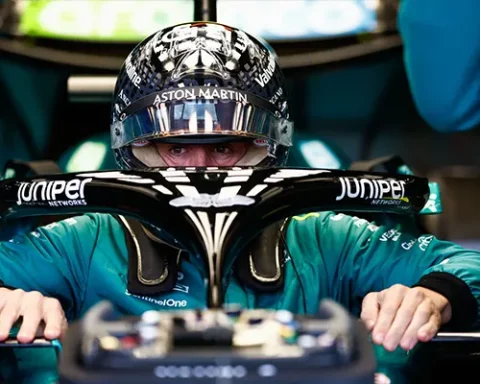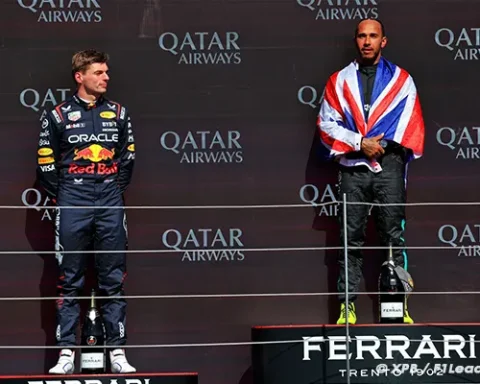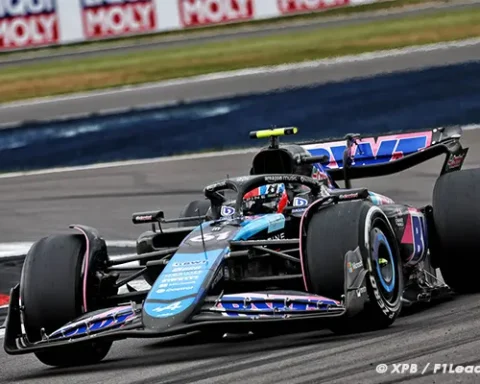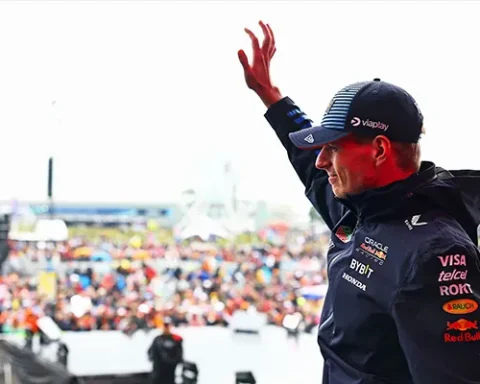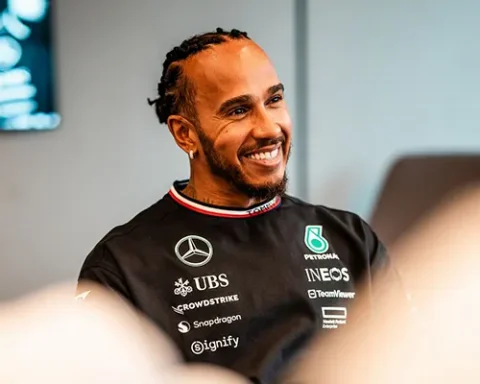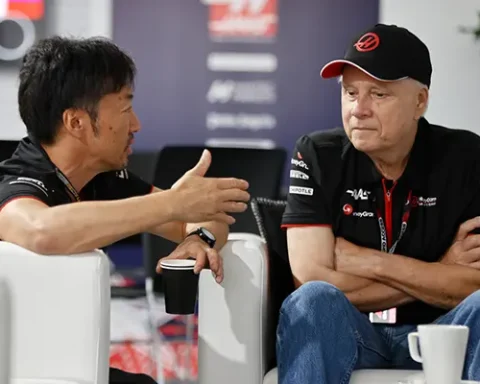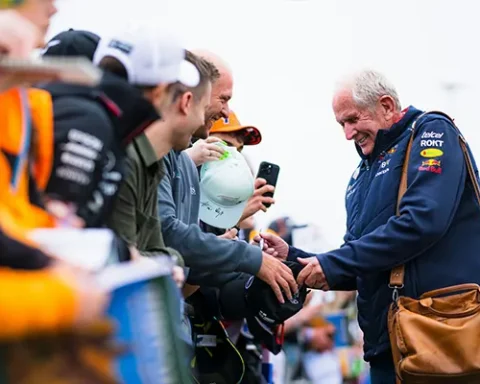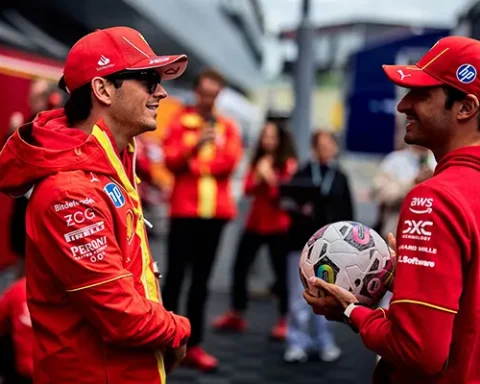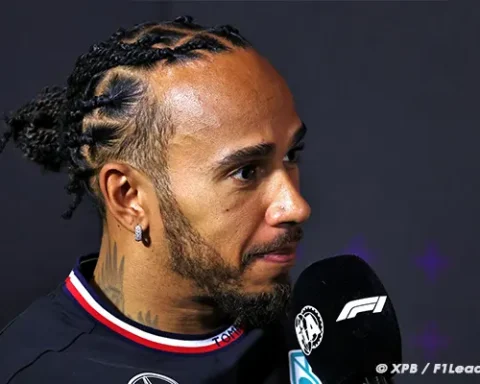Formula 1 - Page 10
Formula 1 stands as the pinnacle of motorsport for single-seaters. Originating in 1950, it has been the FIA Formula 1 World Championship since 1981.
The 2023 Formula 1 World Championship is currently under the dominance of Red Bull Racing and Max Verstappen. The RB19, designed by Adrian Newey, demonstrated its superiority during the winter tests in Bahrain, leaving little competition for the two Red Bull drivers. Max Verstappen secured pole position for the Bahrain Grand Prix and clinched victory in the season's opening race, with Sergio Perez finishing second.
This set the tone for the entire season. Red Bull Racing claimed victory in the first fourteen Grands Prix. Verstappen won twelve of them, while Perez took two. Despite Perez's early hopes of contending for the championship after his triumph in Azerbaijan, the gap widened progressively.
Max Verstappen
Verstappen achieved an impressive feat by winning ten consecutive Grands Prix from the Miami Grand Prix to the Italian Grand Prix, breaking Sebastian Vettel's record at Monza.
Following this record-breaking run, Red Bull Racing faced its first defeat in 2023. The Singapore Grand Prix saw Carlos Sainz emerge victorious, with no Red Bull driver on the podium. Verstappen finished fourth, trailing Lando Norris and Lewis Hamilton.
After a brief hiatus in Singapore, Verstappen resumed his winning streak, claiming victory in the Japanese Grand Prix and securing the constructors' world title for Red Bull Racing. This marked the team's sixth world championship in its history. Verstappen clinched his third world title in Qatar, officially becoming world champion after finishing second in the sprint race on Saturday and winning the main race on Sunday.
Following the third world title, Verstappen and Red Bull Racing continued their winning ways. Verstappen triumphed in the United States Grand Prix, also winning the Saturday sprint race despite facing challenges due to brake issues. Starting the race from P6 due to exceeding track limits in qualifying, Verstappen had to fight harder than usual. The major news unfolded on Sunday after the race when Lewis Hamilton and Charles Leclerc were disqualified for a floor plank exceeding wear limits.
The Mexico Grand Prix
The Mexico Grand Prix was overshadowed by safety concerns, prompting Max Verstappen to arrive with bodyguards and an organizational appeal for respectful behavior towards all drivers. Despite the pressure, Verstappen emerged victorious, while his teammate Perez experienced a conspicuous failure in the first corner of the race, leading to his disappointment. Fans, celebrating Max's win, expressed mixed emotions, with Leclerc receiving jeers and a controversy erupting in the stands.
A week later, the Brazilian Grand Prix once again fell into the hands of Max Verstappen. The Dutchman secured pole position and emerged victorious in the Grand Prix, marking his seventeenth win of the season. To achieve this, Verstappen had to contend with Lando Norris, who had finished second in the sprint race on Saturday. Aston Martin also had a notable weekend, with Fernando Alonso finishing third in the Grand Prix, narrowly ahead of Sergio Perez.
F1 circuit
Amidst much anticipation, the F1 circuit headed to Las Vegas for the first Grand Prix organized by F1 itself. The city of lights embraced the event with grandiosity, but on Friday, a manhole cover incident led to fans being sent home prematurely—a setback for the sport. Carlos Sainz bore the brunt of the manhole incident, with his car sustaining significant damage, resulting in a ten-place grid penalty for repairs.
Sainz's penalty proved costly despite his second-place qualification and a competitive Ferrari in Las Vegas. Charles Leclerc started from pole position and seemed poised for a potential victory. However, the safety car disrupted the plans, bringing Max Verstappen and Sergio Perez back into contention. Verstappen went on to win the Las Vegas Grand Prix, a race he had mocked throughout the weekend. In the final lap, Perez relinquished the second position after a successful overtaking move by Leclerc.
Grand Prix
In the last Grand Prix of the F1 season, several crucial battles unfolded. Ferrari and Mercedes competed for P2 in the constructors' standings, while McLaren and Aston Martin vied for P4, and Williams and AlphaTauri fought for P7. Significant sums of money were at stake, along with the allocation of wind tunnel time for 2024.
The Abu Dhabi Grand Prix saw Max Verstappen triumph once again. Despite Charles Leclerc challenging him in the first lap, Verstappen cruised to a visibly easy victory—his nineteenth of the season, further tightening the record. Sergio Perez finished second, with Charles Leclerc sacrificing his position in hopes of impeding George Russell, a tactic that proved insufficient. Mercedes secured second place in the constructors' standings, McLaren secured P4, and AlphaTauri narrowly missed out on P7 against Williams, despite Yuki Tsunoda's points finish.
The 2023 Formula 1
The 2023 Formula 1 season was dominated by Max Verstappen and Red Bull Racing. Verstappen shattered records, including the most wins in a single season (19) and the highest percentage of wins in a season (86%). With 54 victories, Verstappen now ranks third in the all-time list of drivers with the most wins. Red Bull Racing also impressed with 21 wins in 22 Grands Prix, surpassing even McLaren's dominance in 1988.
Formula 1 World Championship
Post-World War II, Formula 1 emerged as a championship with various races, imposing rules on the cars. Gone was the freedom to do anything with the car; rules were established, and teams had to build the fastest car within those regulations. After a few races, the first world championship was established in 1950.
In 1950, Italian Giuseppe Farina clinched the inaugural world title for Alfa Romeo, narrowly defeating teammate Juan Manuel Fangio. Fangio, the runner-up, would later become one of the greatest in Formula 1, winning titles in 1951, 1954, 1955, 1956, and 1957. This record held until 2003 when Michael Schumacher broke it.
Juan Manuel Fangio
After Fangio's era, where he triumphed for Italian teams Alfa Romeo, Ferrari, Maserati, and German team Mercedes, British dominance began in 1959 with Australian Jack Brabham winning the title for British team Cooper. This dominance continued until 2000, when Schumacher ended the British supremacy. Between 1959 and 1999, only six titles did not go to a British team, with the remaining 35 going to British teams.
Formula 1 becomes a British affair
In addition to British teams like Cooper, Brabham, BRM, Lotus, Tyrrell, McLaren, and Williams, Formula 1 also produced British world champions. The era of Jackie Stewart, Graham Hill, Jim Clark, and James Hunt saw the British nearly winning the championship almost every year. Stirling Moss, underlining British prowess, also competed strongly for the Formula 1 championship.
Meanwhile, Formula 1 became a breeding ground for automotive engineers. From front-engine configurations, F1 engineers quickly transitioned to mid-engine setups. In 1962, aluminum was first used for the chassis, and in the 1970s, Lotus impressed with ground-effect aerodynamics. The cars, aerodynamically suctioned to the ground, barely lifted off and navigated corners like rockets.
The Power of Bernie Ecclestone
Under the leadership of Bernie Ecclestone, Formula 1 also experienced financial growth. Ecclestone became F1's president in 1978 and ensured that circuits paid more for hosting races. It was a case of "participate or stay away," as Ecclestone proved to be tough in negotiations with circuits and teams. Under Ecclestone, Formula 1 evolved into the multibillion-dollar business it is today.
On the track, Williams and McLaren dominated, but drivers from other nationalities clinched the driver's title. After Nelson Piquet, Niki Lauda, and Keke Rosberg, a storm erupted—Alain Prost versus Ayrton Senna.
Senna versus Prost
Prost, with two world titles under his belt, was the established name, while Senna was the rising talent and a significant figure for the sport. Millions of fans worldwide followed their battles, particularly in 1989 and 1990, which escalated into controversies. In the first instance, Senna was disqualified after a disputed duel with Prost, where the Frenchman received favorable treatment from the French head of the FIA. In 1990, Senna intentionally crashed with Prost to secure the championship.
When Prost signed with Williams in 1993, he ensured a clause in his contract preventing Senna from being his teammate. With Williams having the superior car, Prost secured his fourth and final title. Senna joined Williams the following year but tragically lost his life in the fourth race during the San Marino Grand Prix.
Senna's death, coupled with Roland Ratzenberger's demise in the same weekend, marked a turning point in Formula 1. Safety in Formula 1 finally received serious attention, and since Senna and Ratzenberger's deaths, only Jules Bianchi lost his life during a Formula 1 race in 2015.
Michael Schumacher's Breakthrough and the Evolution of F1
In 1994, a remarkable talent emerged: Michael Schumacher. The German would rewrite history, pioneering fitness and sharpness. Securing two titles at Benetton, he later led Ferrari's resurgence, forming a management dream team with Jean Todt and Ross Brawn.
Schumacher claimed five titles from 2000 to 2004, setting consecutive record titles for Ferrari. With seven championships, he surpassed Juan Manuel Fangio. Ferrari's dominance continued until 2005 when a new star, Fernando Alonso, emerged, winning two titles with Schumacher's former team, Renault. Schumacher retired in 2006.
Post-Schumacher, Lewis Hamilton emerged in 2007, not Alonso, winning with McLaren before securing five titles with Mercedes. Hamilton, with six titles, inches close to Schumacher's record. Amid rising talents like Charles Leclerc and Max Verstappen, a seventh title isn't assured.
The F1 landscape in 2020
Post Bernie Ecclestone's era, Liberty Media took over F1 in 2016. Led by Chase Carey and Ross Brawn, F1's future is shaped with new regulations from 2022, a budget cap from 2021, and new engines from 2026.
Under Liberty Media's stewardship, the F1 calendar expanded. Pre-COVID-19, 2020 aimed for 22 races, with aspirations for 25 in the future. Since 2014, F1 races with V6 hybrid engines, and Pirelli supplies the tires. The championship features ten teams and twenty drivers.
F1's points system evolved. Initially, only the top six scored, but now the fastest ten receive points (25, 18, 15, 12, 10, 8, 6, 4, 2, 1), with an extra point for the fastest lap if in the top ten.
